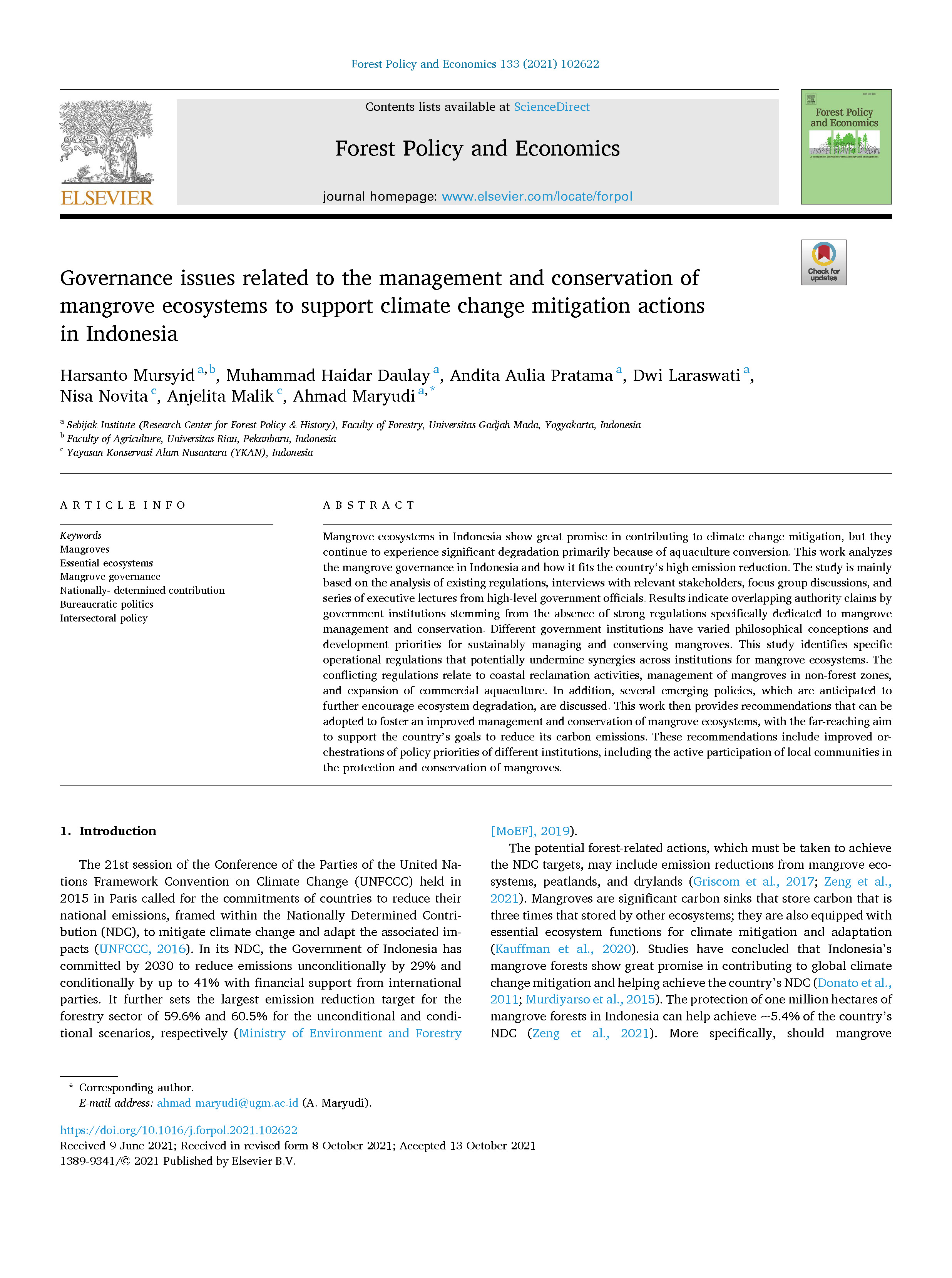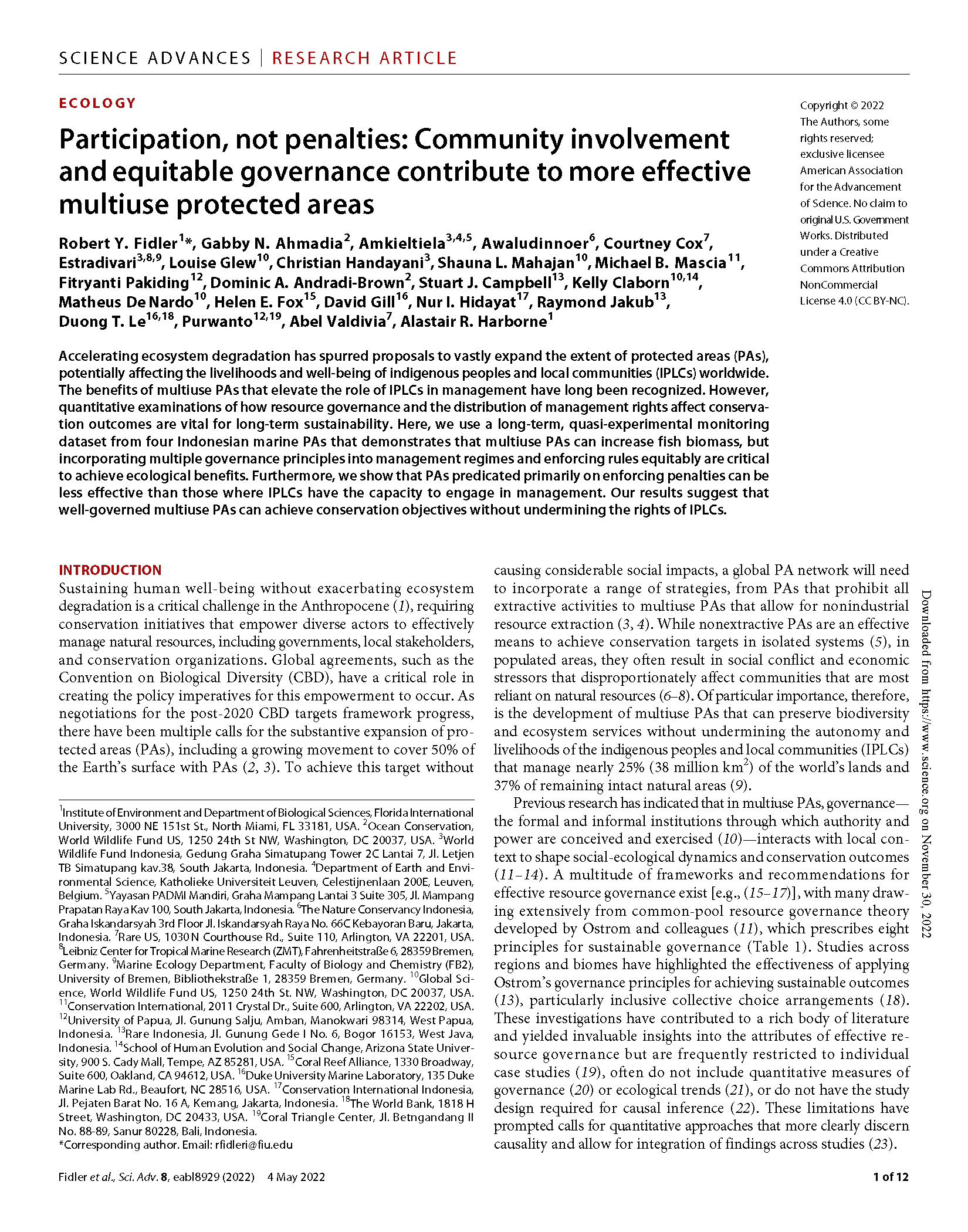In fiscal year 2022
We produced several articles and scientific journals, and published books that summarized study results and lessons learned in the field as part of our journey to protect Indonesia's land and water. The articles, journals and books can be accessed via the following link:
Publication
-
Pukau Berau Chocolate
Fact Sheet
The World Cocoa Foundation revealed that there had been an increase in demand for cocoa by 3% per year in the last 100 years. The rise in world demand for cocoa in the coming years is estimated to increase at the same level.
DOWNLOAD -
Book/Journal
The Provincial Government of East Kalimantan, as a province that has very little lowland forest left due to the rate of exploitation for economic development, is of the opinion that collaborative landscape-scale KEE management is significant for implementation.
DOWNLOAD -
Book/Journal
A growing number of companies have announced zero-deforestation commitments (ZDCs) to eliminate commodities produced at the expense of forests from their supply chains. Translating these aspirational goals into forest conservation requires forest mapping and monitoring (M&M) systems.
DOWNLOAD -

Book/Journal
Mangrove ecosystems in Indonesia show great promise in contributing to climate change mitigation, but they continue to experience significant degradation primarily because of aquaculture conversion.
DOWNLOAD -
Reforestation Opportunities in Indonesia
Book/Journal
Mangroves are unique intertidal ecosystems that are experiencing high rates of deforestation throughout the world. Indonesia that has the highest mangrove cover in the world has lost its mangroves significantly in 1980s.
DOWNLOAD -
Book/Journal
This study focuses on reforestation opportunities to support Indonesia’s NDC in reducing GHG emissions by 2030. We identified unproductive areas of land (shrub, open land) with highly degraded conditions as potential areas for reforestation.
DOWNLOAD -
Sustainable Mangrove Management in Indonesia
Book/Journal
Indonesia has placed mangroves on its national priority agenda in an important effort to sustainably manage this ecosystem and achieve national climate commitments. However, mangrove management is faced with complex challenges encompassing social, ecological, and economic issues.
DOWNLOAD -
Book/Journal
The objective of this study was to quantify the climate change mitigation potential of mangrove conservation and restoration in Indonesia.
DOWNLOAD -
Sustainable Plantation Regulations
Book/Journal
This collection of copies of regional regulations related to sustainable plantations was printed in collaboration between the Provincial Government of East Kalimantan, the East Kalimantan Sustainable Plantation Communication Forum, and Yayasan Konservasi Alam Nusantara.
DOWNLOAD -
Book/Journal
This booklet describes the achievements and lessons from the collaborative program Implementation of Low-emission Sustainable Oil Palm Development in East Kalimantan.
DOWNLOAD -
Fact Sheet
The SIGAP program positively impacted the people in the villages that had done it first. Now they can plan development while conserving natural resources, forests, and land, which are village assets.
DOWNLOAD -
Fact Sheet
The plantation sector plays an essential role in the Indonesian economy. In 2021, the contribution of the plantation sector to the national Gross Domestic Product (GDP) will reach 3.94 percent. The plantation commodities that are the national mainstay are oil palm, rubber, coconut, coffee and cocoa.
DOWNLOAD -
Fact Sheet
YKAN and other partners continue to support the implementation of the principles of mitigation and compensation for the development of sustainable oil palm plantations.
DOWNLOAD -
Fact Sheet
East Kalimantan is one of Indonesia's provinces with the highest ecological and economic wealth. Nevertheless, East Kalimantan also faces challenges in the form of three decades of legacy due to unsustainable management of natural forests, oil palm plantations, and mining.
DOWNLOAD
-

Accelerating ecosystem degradation has spurred proposals to vastly expand the extent of protected areas (PAs), potentially affecting the livelihoods and well-being of indigenous peoples and local communities (IPLCs) worldwide.
DOWNLOAD -
Book/Journal
Deep demersal fisheries in Indonesia yielded close to 90,000 metric tons of snapper and grouper in 2019, landed by a fleet of approximately 10,000 fishing boats. Prior to the present study, information on these multi-species, dispersed, small- to medium-scale fisheries was scarce.
DOWNLOAD -
Book/Journal
Quantifying accurately human impacts on marine ecosystems is key to healthy oceans. While fish production from wild stocks has plateaued since the 1980s, those estimates are primarily drawn from large-scale commercial fisheries.
DOWNLOAD -

Book/Journal
The deep demersal snapper-grouper fishery in Indonesia is a data-poor fisheries resource that provides food security and a source of income to millions globally. Owing to an ongoing crew-operated data recording system implemented in Indonesia since 2015.
DOWNLOAD -
Book/Journal
The Indonesian groundfish fishery comprises 4 fishing methods, drop-line and long-line, trap and gill-net. There are an estimated 10,185 licensed vessels operating throughout the 11 WWPP zones (June, 2020).
DOWNLOAD


